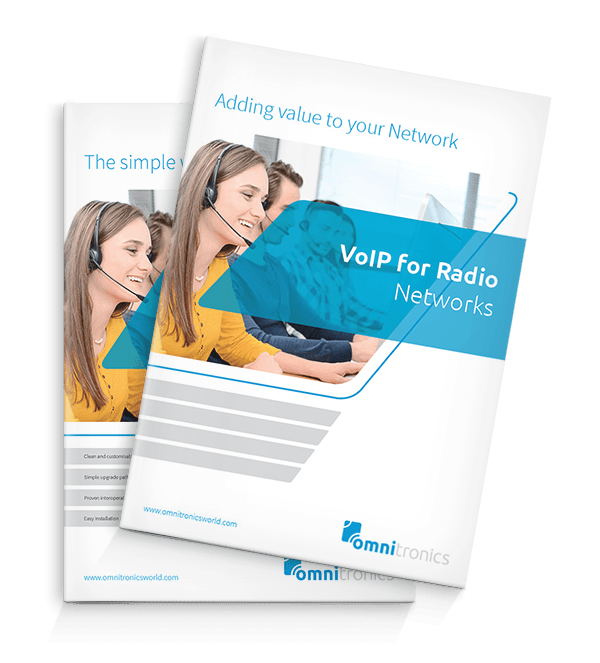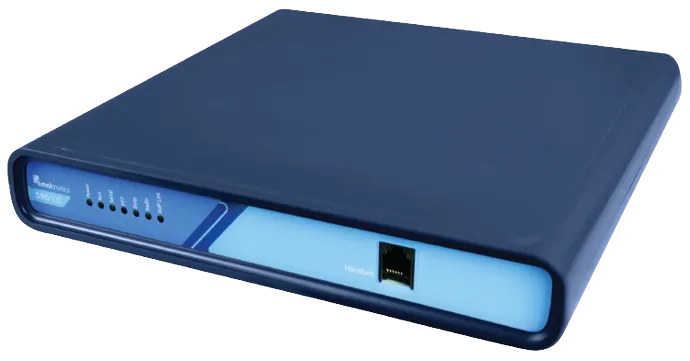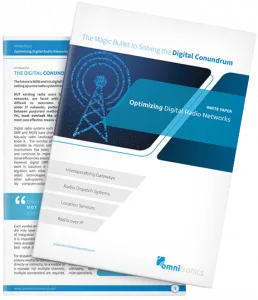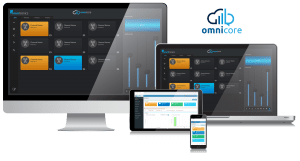
An Overview of VoIP for Radio Networks
With its ability to use already existing IP infrastructure, the technology can help organizations reduce costs, increase reliability and improve interoperability. This is, in part, achieved with two-way analog and digital transceivers enabled gateways for IP networks.
So, what does VoIP for radio, or Radio over IP, entail exactly? And what are the features related to the benefits?
Radio versus Telephony
While telephony requires certain protocols (in addition to VoIP) to setup, monitor and control calls, radio can function without all of these mechanisms. Of course, to ensure traditional radio functions are still controlled and monitored, certain control and status signals (such as PTT and Busy) must be transported through IP and concomitant with the audio. The difference is that radio can be delivered over IP with less complexity than telephony.
Despite these differences, both radio and telephony utilize the same mechanisms to transport voice through packet switched data networks. Using a device called a CODEC, spoken stimuli are converted into digital data, assembled into UDP packets and transmitted at 20ms – 40ms intervals. The CODEC, on the receiving end, then changes digitized information into analog signals.
Radio over IP
- Improved interoperability: Because audio can be routed to nearly any type of radio system once it’s in the IP domain, HF, UHF and VHF radios can be interconnected. Moreover, the use of SIP technology also expands interoperability to corporate communication systems.
- Reduced costs: No extra cabling and communication paths are required to install a new radio or console as many organizations already have internal IP, LAN or WAN. Because of this, upgrades to existing infrastructure are inexpensive and easy. The biggest saving, however, originates from the ability to replace wireless links and leased lines.
- Increased reliability: The system operates within a mesh IP network, inherently making the infrastructure more resilient.
White Paper
VoIP for Radio Networks
Radio over IP (RoIP) adds significant value to Radio Networks. This White Paper explores the many benefits of this technology and discusses the range of differing applications in which it can be used.

Welcoming SIP
Whilst SIP adds a level of complexity to RoIP, it also provides a significant benefit. For maximum collaboration and productivity, communications media need to be unified, whether they are mobile phones, PBX, or digital or analog radio. SIP supports this unification. In addition, it increases flexibility within radio networks through the ability to re-configure networks dynamically. RoIP gateways that are SIP enabled allow connected radio systems to interact with a wider range of corporate communications media and radio resources can be added, excluded or re-assigned on demand and as required.
Three Types of Connection
Used for one-to-one communications, the unicast mode transfers data to a single IP address. Multicast communications, on the other hand, transmit one VoIP packet to several devices simultaneously, working through group affiliation across a shared IP address. The third option, conferences, enables different devices to share copies of the same VoIP packets to every other device within the group conference. Although Multicast is efficient in larger networks, conferencing can achieve a similar result but with much less difficulty.
Common Applications
VoIP can be used anywhere that requires radio resources (repeaters, links or dispatch consoles) to be interconnected one-to-one or one-to-many. It is commonly used to replace existing leased line connections. However, it’s ideal for new installations where it now enables broader radio coverage to be made available at low cost and with greater ease.
The five most common applications of VoIP within the radio realm involve the following:
- Replacing a UHF/VHF link between two repeaters.
- Replacing a leased line connection from a console to a repeater or between two repeaters.
- Extending radio coverage over large distances and bypassing difficult terrains.
- Enabling communications between a radio network and a PBX.
- Bridging multiple repeaters.
Choosing the right tools to communicate across networks can enable an organization to grow and change both effectively and with cost-efficiency. Download a free copy of Omnitronics’ whitepaper on VoIP for radio to read more about the flexible and reliable network infrastructure. Alternatively, get in touch with us for specific queries.
Best RoIP Vendor
3 Reasons Why You Should Choose Omnitronics RoIP Solutions
15+
Over 15 Years
15+ years of connecting radios using
Radio over IP
#1
World Leader
One of the first in the world to develop RoIP technology
Customized RoIP Features
We can customize to suit your applications with our clever team of RoIP engineers
Radio over IP is used in many applications to achieve the above benefits, click here to learn more. Or Contact Us for more details.
Ready to get started?
RoIP Gateways
Discover Omnitronics leading range of RoIP and Interoperability Gateways.

Case Studies
Similar Success Stories
CASE STUDY | omnicore Dispatch Unifies Disparate Networks Across the Country
AWARD | Omnitronics wins ARCIA Industry Excellence Award: Local Manufacturing
AWARD | APCO Int Technology Leadership Award
Omnitronics omnicore Dispatch Technology Wins Prestigious APCO International Technology Leadership Award with Tait DMR T3 Integration into...










